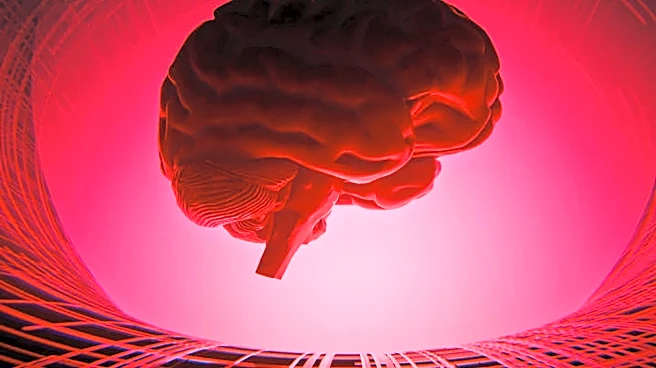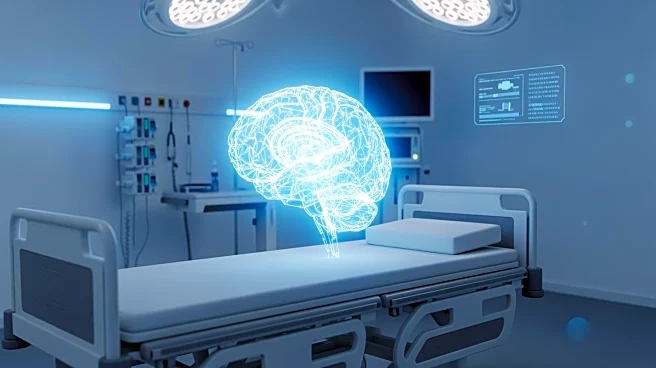What's Happening?
A recent study has explored the connection between future-oriented thinking and ADHD characteristics, focusing on brain network communication. The research, published in Progress in Neuropsychopharmacology
& Biological Psychiatry, suggests that the strength of communication between specific brain networks is linked to a person's ability to plan for the future, which correlates with the severity of inattention and hyperactivity. The study involved 240 healthy university students who completed questionnaires and underwent MRI scans. Findings indicated that individuals with a higher future time perspective exhibited stronger functional connectivity between the left inferior parietal lobule and parts of the medial prefrontal cortex, which are involved in setting future goals and evaluating their personal value.
Why It's Important?
This research provides insights into the biological underpinnings of ADHD traits, potentially influencing future therapeutic approaches. By identifying specific brain circuits associated with future-oriented thinking and ADHD traits, the study opens avenues for interventions that could enhance future time perspective as a means to mitigate ADHD symptoms. This could lead to more personalized treatment strategies, benefiting individuals with ADHD by improving their ability to plan and self-regulate, thus reducing inattention and hyperactivity.
What's Next?
Future research may focus on clinical populations to validate these findings and explore cause-and-effect relationships. Such studies could inform the development of new interventions targeting brain connectivity to strengthen future-oriented thinking, offering potential improvements in ADHD management. Researchers may also investigate how these brain networks can be modulated through behavioral or pharmacological means to enhance cognitive control and planning abilities.
Beyond the Headlines
The study highlights the importance of considering ADHD as a spectrum rather than a categorical diagnosis, suggesting that traits associated with ADHD can be present in varying degrees across the general population. This perspective may shift how ADHD is approached in both clinical and educational settings, emphasizing the need for tailored interventions that address individual cognitive styles and brain connectivity patterns.











